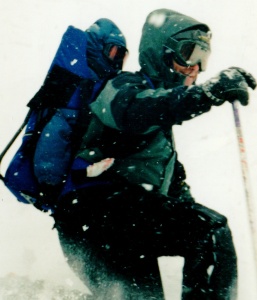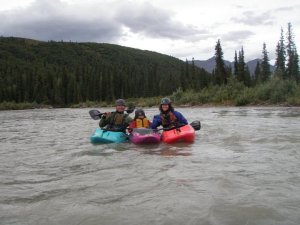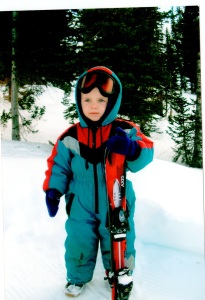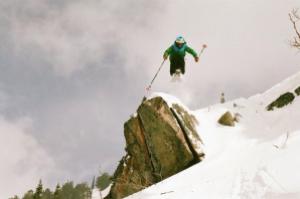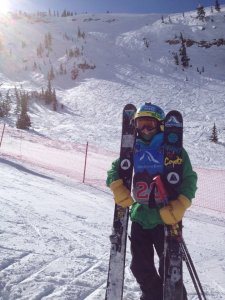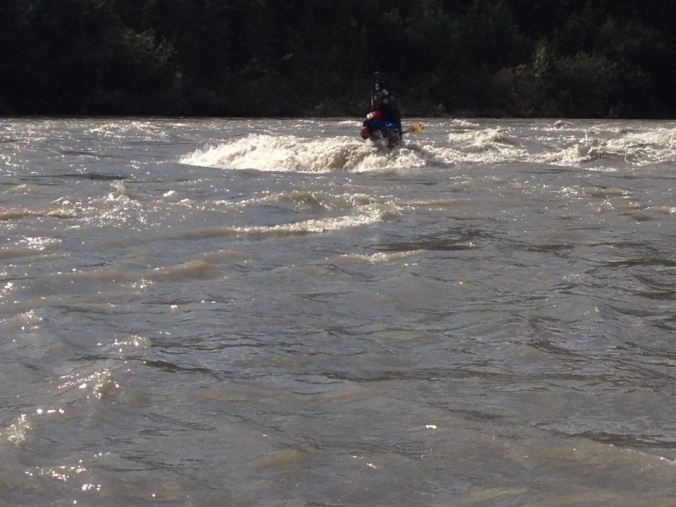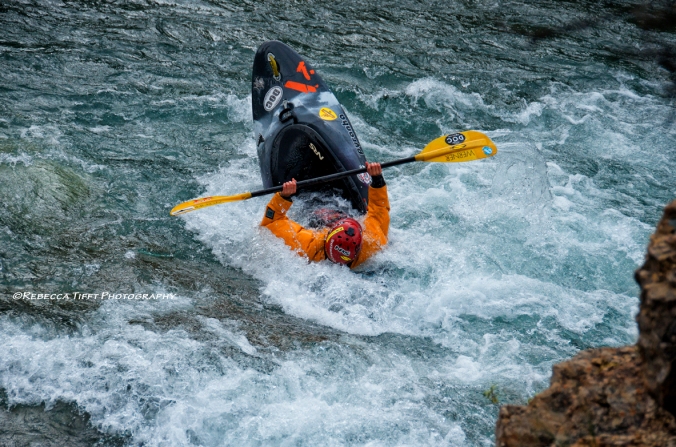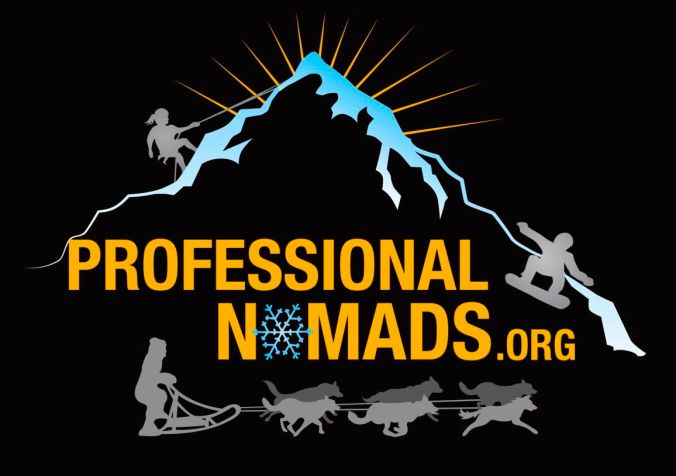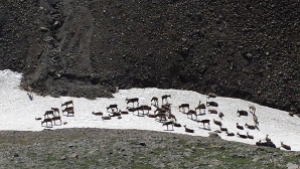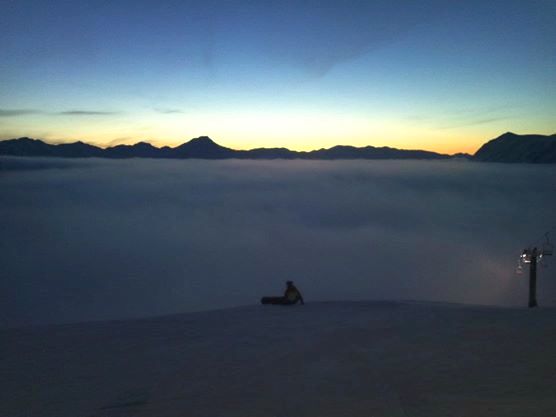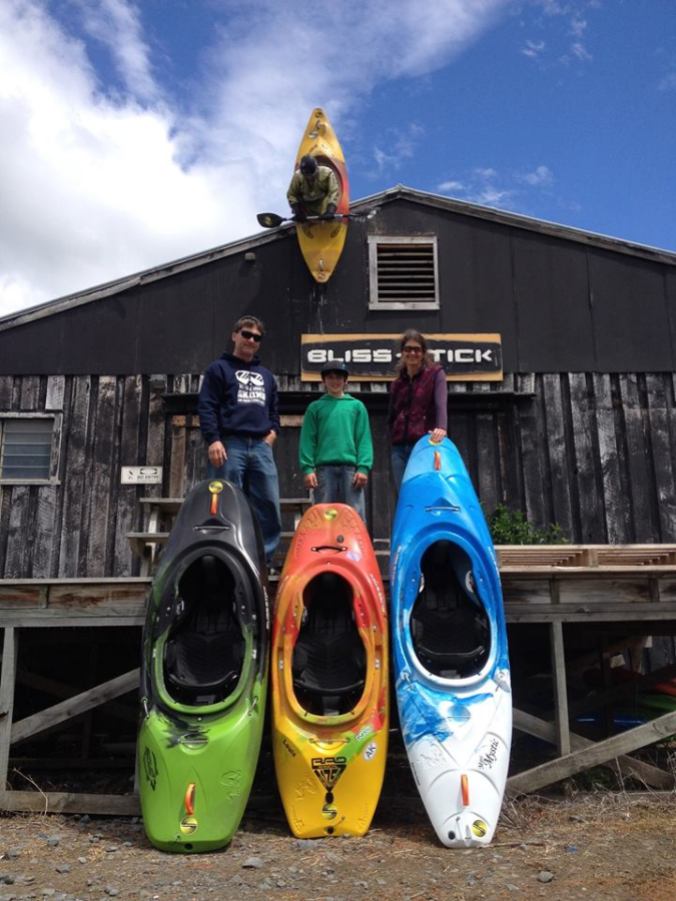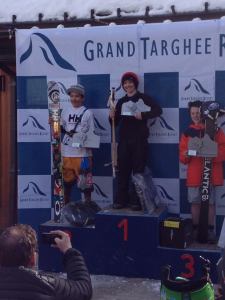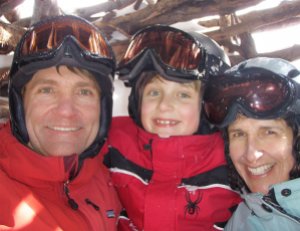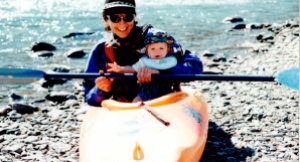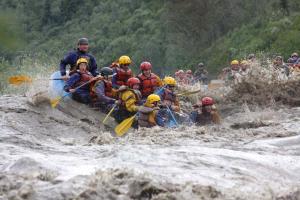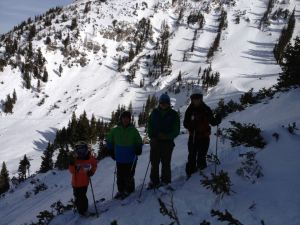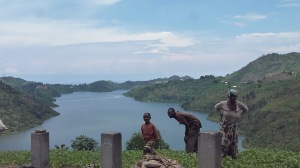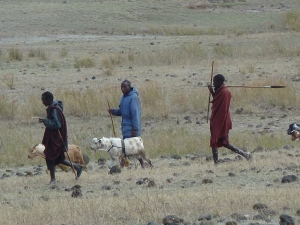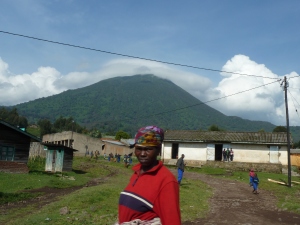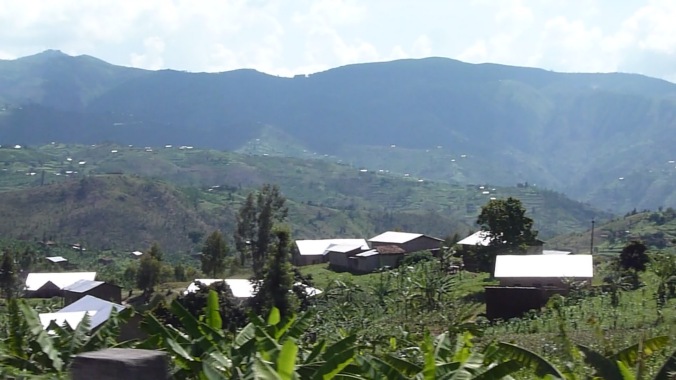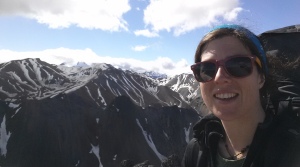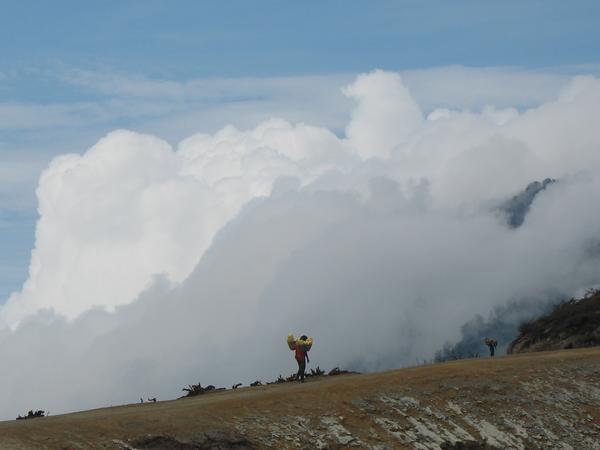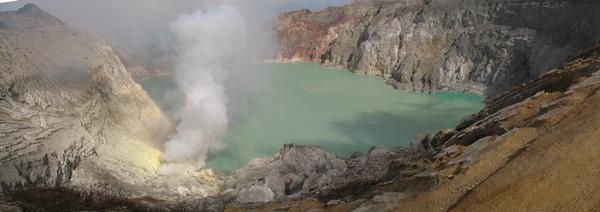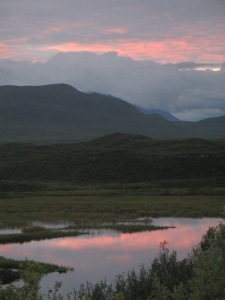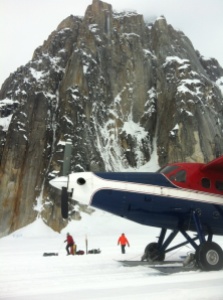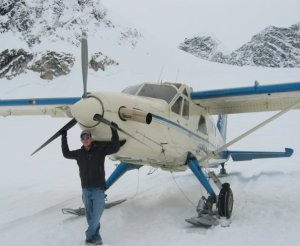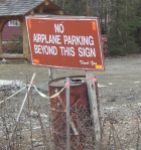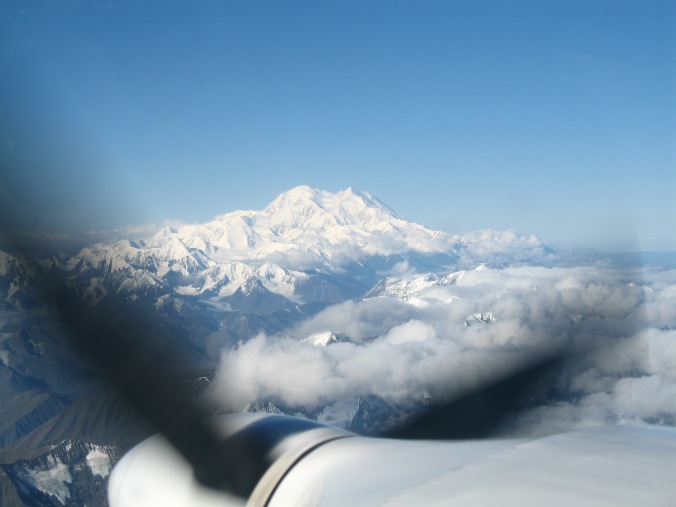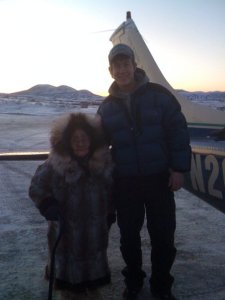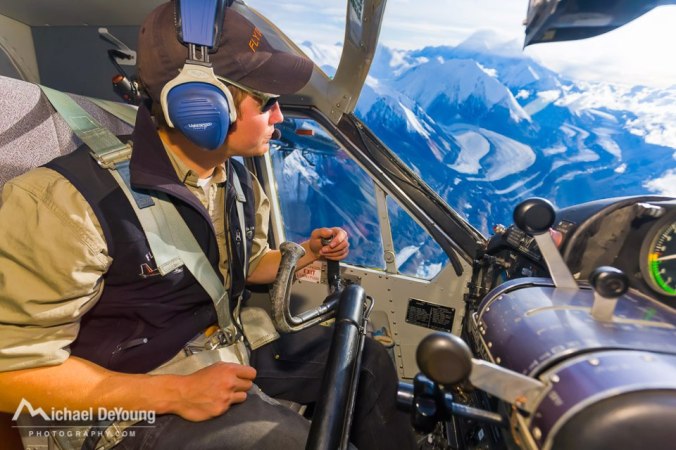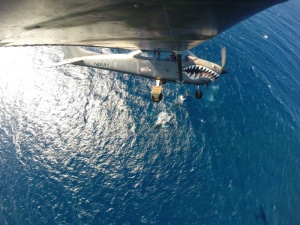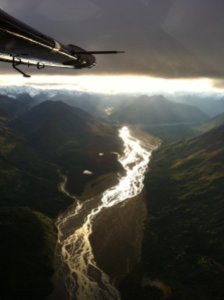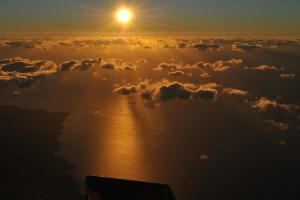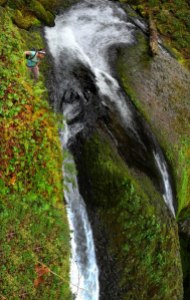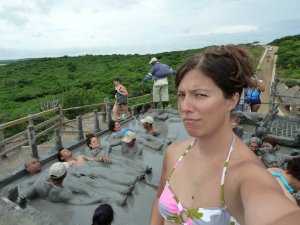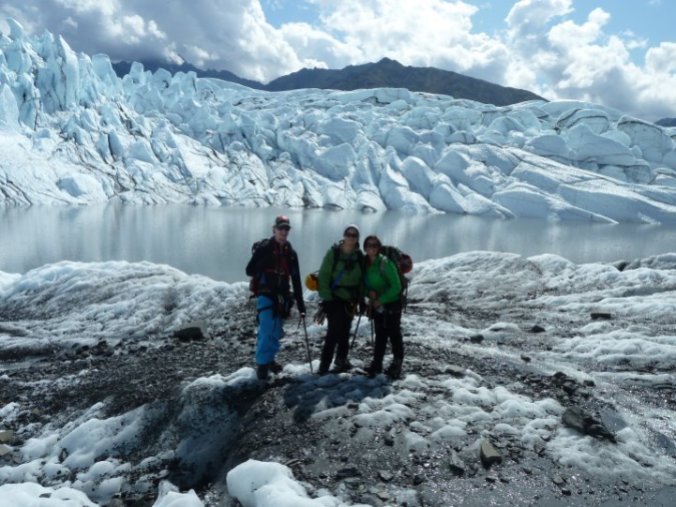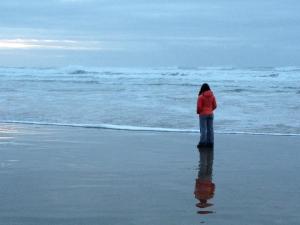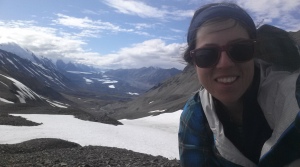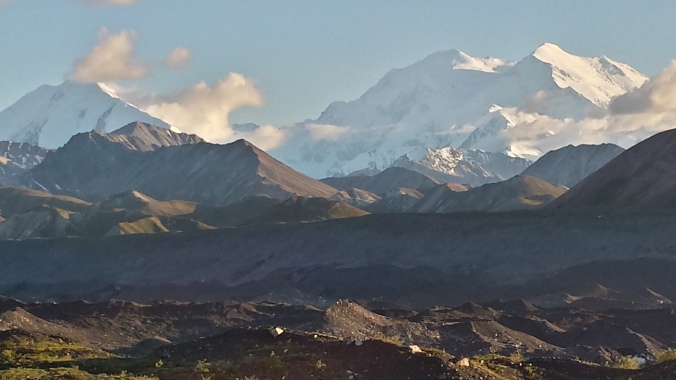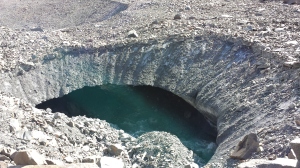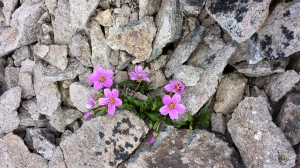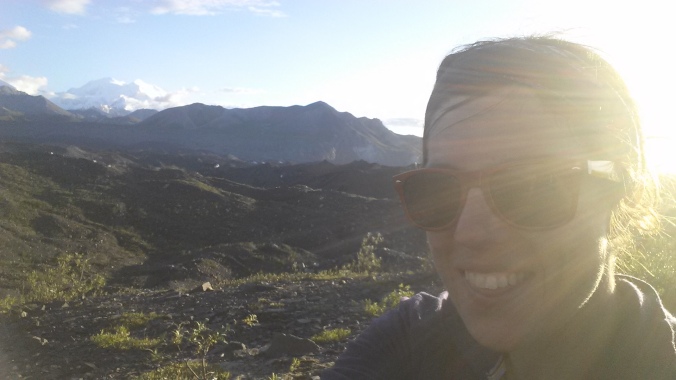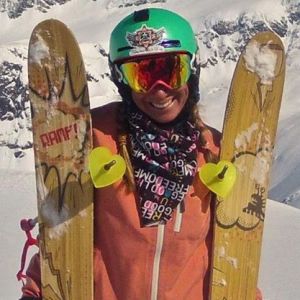Children thrive on stability. For the Overingtons, that balance spans two homes in two separate environments, thousands of miles apart yet inextricably linked by a predictable, seasonal migration. In part 1 of their story, we discovered the obstacles the Overingtons overcame to make their lifestyle work. In part 2, we’ll examine the opportunities that their nomadic lifestyle has offered their son. Just as sharing in the outdoors bonded Buckwheat and Louise as a couple, the birth of their son, Louis, secured that passion as the cornerstone of their family dynamic. The Overingtons prove that professional nomads can lead stable family lives, and even offer their children valuable opportunities endemic only to the nomadic lifestyle.
Family time
Born in April, Louis began hitching rides down Utah ski hills in his father’s backpack at six months. “First two years with him in a backpack I didn’t slow down. I was skiing everything, all the trees and steeps and chutes, not even changing my ski tactic at all, just taking him everywhere.” Buckwheat laughs. “I got a lot of crooked looks out of that.”
By three, Louis was getting a little heavy so they put him on skis and took turns parenting on the bunny slopes and indulging hot chocolate breaks. The adventure slowed down temporarily as Louis learned the fundamentals of skiing, but simultaneously it developed new meaning for his parents. A brand new adventure awaited on the other side of that learning curve. At eight, Louis showed interest in jumping bigger, so Buckwheat figured he’d test out each jump or drop to measure its suitability for his son. It wasn’t long before the roles reversed and these days Buckwheat finds himself following his son off cliffs he would never have dared on his own.
Like Wasatch snow in the winter, Alaskan rivers provide a summer environment in which the Overingtons can grow as individuals but also bond as a family. They comprise a perfect, self-sufficient boating trifecta with enough eyes and paddles to look out for each other. No longer do they follow in a tight line through rapids for safety. Now the family scatters across the familiar, turbulent water and catches waves within eyeshot of each other as they dance from one feature to the next. Although Louis has developed into a solid class IV boater, it’s not important to him to always be on the gnarliest section of river—though it is critical to explore whichever section he is on to its maximum playfulness. Beside him, Buckwheat enjoys guiding his son’s development and Louise values family time outdoors. Sharing their passions keep their lives intertwined and engaged with one another. Their nomadic lifestyle provides daily outdoor opportunities year-round and Louis’s enthusiasm ensures that everyone gets a large helping of them.
Natural classrooms
Like many kids, Louis’s athletics are a classroom for life lessons. In all areas of their son’s development, Buckwheat and Louise have encouraged Louis to approach challenges by analyzing risk versus reward. “I think that’s been the balancing act with Louis in adventure sports: taking the risk but trying to keep the fear out of it, not taking the risk too far; knowing where the limitations are, knowing where the edge is, and giving him the opportunity.” In this situation, that approach has worked well. “Fortunately he’s not a blind hucker. He’s a calculated risk kid; he wasn’t the first one down the slide.” Louis learned by watching others and estimating his abilities from what he saw. Even in adventure sports, that calculated attitude still pervades.
Louise recalls her son’s first powder run. Louis watched an older kid ski first and then assessed the slope thoroughly. “I saw him contemplating the run, for a little guy who was five. Louis just stood there watching it—very calculated—and then he just took off. It was so cute; it was perfect! Beautiful little turns all the way down.” From there, Louis would always be reaching for more of that—more autonomy, more understanding of the environment, and more confidence that he can work within natural parameters to face challenges.
The Overingtons couldn’t fathom how integral the outdoors would become in their son’s development. Over the years he patiently built a technical skill set, but the winter and summer surrounding his eleventh birthday showcased that the physical and mental side had finally caught up to his dedication. “It’s a whole new level of confidence,” his dad says. “He’s stronger and smarter. He’s not a little boy anymore.” His drive grew with his abilities and at twelve Louis became the no-name kid who won the IFSA Freeride Nationals in his age group. The title was exciting, but the season was about much more than that for Louis. Similar to the painting an artist hangs in a gallery, the championship was payoff for dedication unwitnessed by the audience. Moreover, for Louis it’s meaningless without it.
“I don’t really want to have a competition against other people, I just want to have a competition against myself. If I’m, like, skiing like crap but I’m winning…” Louis looks for the words. “You’re not as happy as if you were skiing really well and not winning,” his dad offers. Louis nods. “I kind of, like, have a goal against myself. I just see how well I did so it’s definitely a goal, not an expectation.”
The seasonal dynamic has offered Louis unique learning opportunities right outside his door. Consistent exploration in these environments have taught him about the natural world as well as himself. Through skiing he’s likely learned about different types of snowpack, how temperature alters it over time, and mountain composition. For himself, skiing’s taught balance, skill progression, and how to set achievable goals. Similarly, through kayaking he’s learned about buoyancy, displacement, current, characteristics of glacial water vs. fresh water, how water and erosion shape the landscape, and that water flow is unceasing. Consequently, he’s learned to maintain mental composure, embrace difficulty, and that consistent hard work pays dividends. Reflecting upon both sports, he may have even likened the flow of water to that of wind over a ridge top recognizing that both create eddies on the leeward side of the current.
Louis’s adventures reaffirm his ability to assess situations thoroughly and trust his judgment. Through all of it he probably learns more from his failures than his successes. He tests himself against the challenges nature sets and in return the environment provides measurements that don’t lie. For Louis, the world is a playground and the lessons are infinite.
Après ski lessons

Buckwheat and Louis paddling the downriver race in the Nenana Riverfest (photo courtesy of Kris Capps)
The same lessons taught in adventure sports mirror the Overingtons’ parenting philosophy. Buckwheat encourages his son to, “explore those boundaries, and assess the danger factor, and make those decisions and pay the consequences for whatever the result is from that decision; learn from it and grow from it.” They believe responsibility mixed with culpability have given him a step up in many aspects of his life.
Lessons about right and wrong are achieved through self-discovery and consequences. “I learn a lot every day from letting this one play out. And it encourages Louis to test the boundaries, sometimes to our frustration, panic, alarm, etcetera, but more often to our pleasant surprise and amazement. You take the good with the bad,” Buckwheat explains. “I want to be there to monitor, nurture, and assist in his discovery and decision-making while I can, so hopefully he will be more capable when I’m not there. How can you learn self-preservation when you’ve been guided by, “stop, don’t, and no?” Throughout all of it Louis is making decisions and learning about his own abilities.
“The thing is,” Buckwheat explains, “I’ve also noticed that by leading with a loose leash you don’t really have to yank on the leash. They learn how to discover that edge themselves because they’ve been discovering where it is their whole life and so they’re much more familiar with where that edge is and how to recognize it when they get there. A few times here and there, it’s more like suggestions, giving them a different perspective on something that maybe you’re seeing in a different way.”
Sociability
Louis has grown up in a more socially varied world than just winter scene versus summer scene. From raft guides, to kayakers the age of his grandparents, to ski coaches, to local athletes he admires, Louis’s dynamic background seems to have given him a step up socially. He engages easily with people of all ages and older and younger companions alike often find his excitement and optimism infectious.
At ten years old Louis’s dad lobbied for him to get into the Alta Freeride Division (AFD). They had tried several ski programs previously but because those organized participants by age nothing quite meshed. The minimum age requirement for AFD had just been lowered from twelve to eleven for the first season ever, but Louis was only ten so his dad arranged for him to tryout with the coaches. They determined that Louis’s skiing skills and maturity would balance well with the rest of the team and invited him to participate. Throughout the winter, Louis impressed the coaches with more than his skiing. At the end of the season they award a cowboy-style belt buckle to the member of the team who brings the right attitude and embodies the values that they’re trying to instill in all the skiers on the team. Normally the buckle is reserved for a second or third year athlete but that year they picked Louis, a brand new athlete and youngest member on the team. Buckwheat beams when relaying this. It’s clear that public recognition for those qualities in Louis makes him prouder of his son than any gold medal.
The big picture
Louis has made some notable athletic strides in his young life, but those aren’t the things that make him a noteworthy kid—it’s what Louis and his family represent on a larger scale that’s important. The nomadic lifestyle enables deeper immersion into our passions—a valuable gift nomads can share with their children. Not only is it possible to continue the seasonal lifestyle into parenthood, when done well it offers children unique learning opportunities, connects them with their environment, and provides opportunities to achieve autonomy at a young age. For Louis it’s not a question of how he handles the seasonal lifestyle because that’s been the tempo of his entire life. So far Louis has been part of only two communities—one in the summer and one in the winter—and in each one he’s connected with the landscape and grown his identity from that. The Overingtons teach us that professional nomads do not have to abandon the lifestyle they love to raise a family. In fact, that lifestyle might rank among the greatest gifts they have to offer a child.
